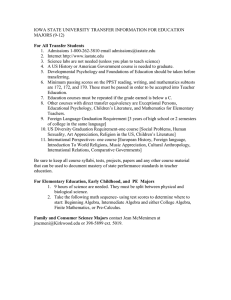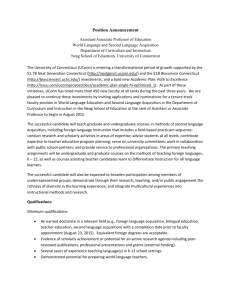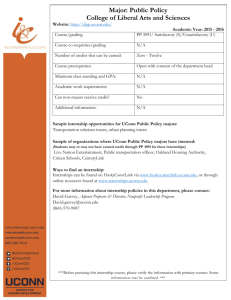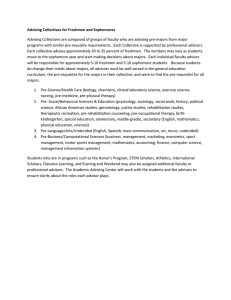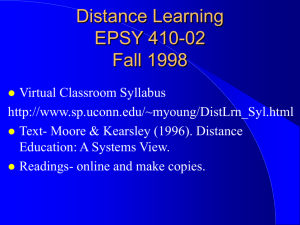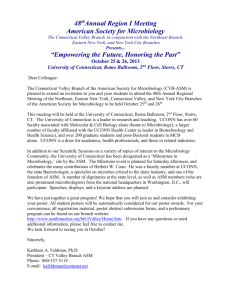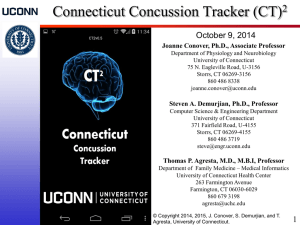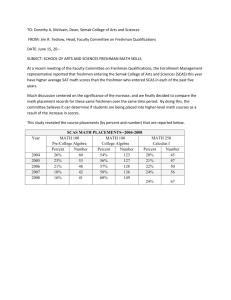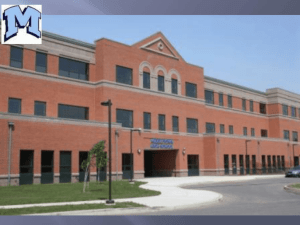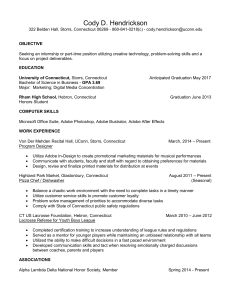The American High School - University of Connecticut
advertisement
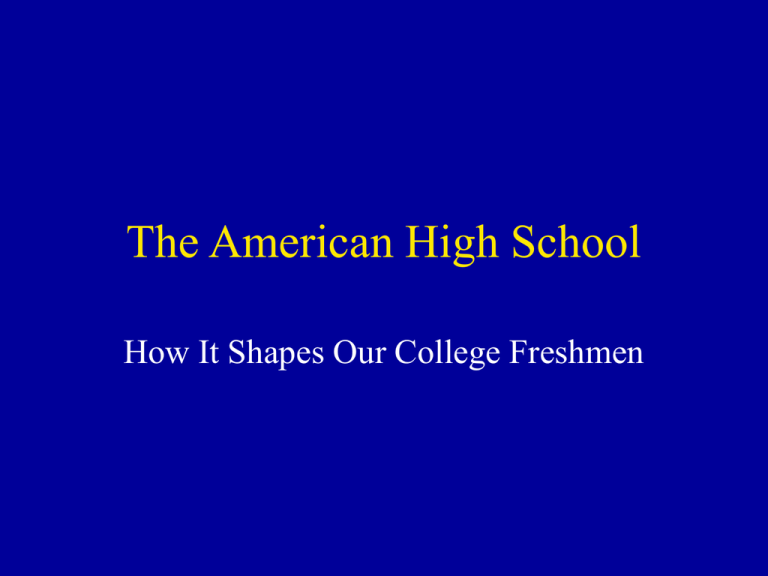
The American High School How It Shapes Our College Freshmen A Few Facts: • No national curriculum; each state can set own standards • Each teacher has freedom to decide what to teach • Each teacher decides how to test, how many tests to give, how to grade tests Students:Who Goes Where? • The public schools are free to all students who live in the geographical region For example: E.O.Smith serves 3 towns: Mansfield, Ashford and Willington • Buses pick up students at their homes or close to their homes to transport them to school • The schools must accept all students regardless of learning disabilities or physical handicaps What Do They Do There? • Classes run from 7:25 a.m. to 2:10 p.m. • Your classes are chosen for you by meeting with a guidance counselor who checks to see that you will have the right classes to graduate • The school year is approximately 36 weeks: some classes go all year, some change at midterm Typical Classes • Science: Biology, Chemistry, Physics*, Earth Science* • Mathematics: Algebra I, Geometry, Algebra II, Pre-Calculus* • Social Sciences: World Civ, American History, Geography • English: Tech prep, college prep, literature • Art: Drawing, Painting, Sculpture, Jewelry • Music • Physical Education= Gym; required first 3 years • Foreign Language: Spanish, French, Latin, German And…after school! • Sports: Football, basketball, soccer, tennis, golf, track, volleyball, cheerleading • Clubs: Chess, Math, Latin, Ski, Drama, French, etc. • Music: Band, orchestra, jazz ensemble • Driver’s Ed--students can get license at 16: must have driver’s ed course: state regulation So, the typical H.S. student is… • Well-rounded or has a superficial knowledge of many things? • NOT prepared to be an independent learner • NOT sure what s/he wants to study or has parents telling him/her what to study • NOT sure what do with all the free hours in a day at college/or working all the free hours! High School to College How does this translate into what happens in college? Who comes to UConn? • 35% entering freshmen in top 10% of high school class • 79% in top 25% • 80% Connecticut residents • Average SAT score: 1177 (national average is 1026) A Little History… • 1940: 16% of population attended college • 1961: 48% High school grads went to college • 1981: 53.9% • 2001: 61.7% • Between 1991-2 and 2001-2 tuition at public colleges rose 21%; private 26% Which means… • Students are increasingly less elite • Average student is less affluent • 2004: increases in tuition during preceding decade outpaced inflation and growth of median family income • DEBT: college students incurring debt and working while in school Who leaves UConn? • Graduation rate within 6 years: 71% • To repay debts students choose practical majors; “well-paying” fields • Decline in majors like philosophy, history, English • Increase in business, computer science, health professions • Market driven, market focused universities Your job then is… • Figure out how to deal with a class of students who have totally different backgrounds and levels of preparation • Encourage/motivate them to do the work and keep up • Teach them how to study in your field • Remember they will not learn like you did! Things to Think About… • Major differences between U.S. High school system and your country’s? • How will these differences show up in the college classroom? • Is there anything you’ll need to change about your teaching style? Prepared by: Catherine Ross Institute for Teaching & Learning University of Connecticut Bibliography Nathan, R. (2005) “My Freshman Year:What a Professor Learned by Becoming a Student”, Cornell University Press.
